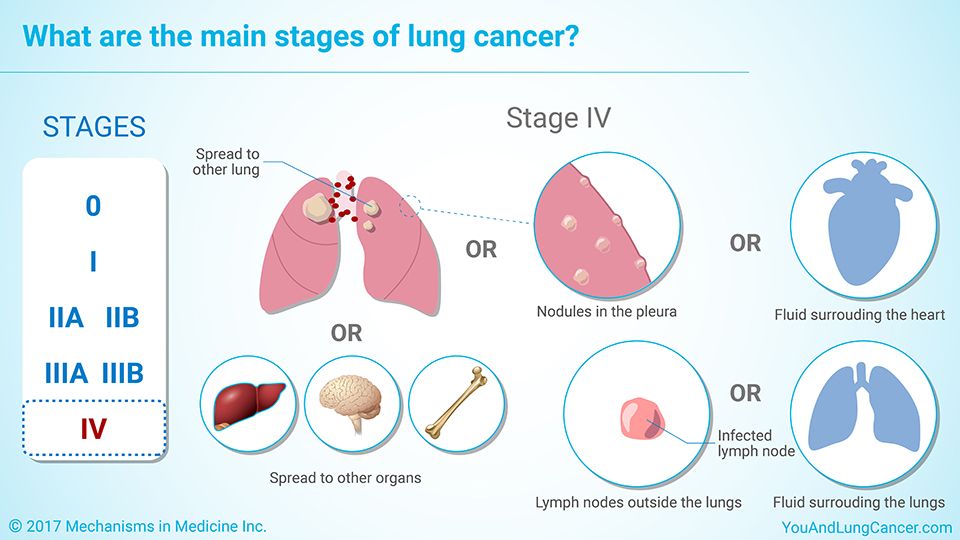Lung nodules small masses of tissue in the lung are quite common. Its usually detected on an X-ray or computed tomography CT or CAT scan.

What Does Having A Nodule On The Lung Mean Idiopathic Pulmonary Fibrosis Lunges Pulmonary Fibrosis
Lung Nodule Treatments Treatment for lung nodules may range from a watchful waiting approach for benign nodules to surgery chemotherapy and radiation therapy for malignant nodules.

How to treat cancerous lung nodule. Remove large or cancerous nodule with surgery. People with limited-stage small cell lung cancer confined to the chest simultaneously receive a combination of chemotherapy and radiation therapy to shrink the tumor. Larger lung nodules are more likely to be cancerous than small ones.
If there is a higher chance that the nodule is cancer or if the nodule cant be reached with a needle or bronchoscope surgery might be done to remove the nodule and some surrounding lung tissue. The best way is to monitor them by repeating the CT scan after a time interval to see whether they grow or change in appearance. If the nodule grows causes problems or is cancerous you may need surgery.
During my CT scan they incidentally picked up a 6mm nodule on my left lung and was told that it would be too small for referral and would get a letter in post to discharge me following the lung mgt review the scan pictures. Understanding the risks of pulmonary nodules is the first step of getting treated. Surgical procedures to remove noncancerous and cancerous pulmonary nodules include.
Your healthcare team may recommend a. By removing the nodule. Video-assisted thoracic surgery VATS.
In fact lung nodules are found in up to half of the people who have chest X-rays. For instance a person with a small nodule who is at low risk might have a follow up CT scan annually for two years. In most cases benign lung tumors dont require treatment.
Malignant cancerous nodule will. This is a surgical procedure in which a surgeon makes a. During VATS your provider inserts a thoracoscope scope with a camera and tiny surgical instruments through several small chest incisions.
These doctors may be better equipped to offer the proper guidance and order further testing when appropriate to determine whether you have lung cancer. Yes lung nodules can be cancerous though most lung nodules are noncancerous benign. Lung cancer if localized is usually removed surgically.
If the nodule is cancerous a few more samples will be taken or other tests performed to determine if the cancer has spread. They appear as round white shadows on a chest X-ray or computerized tomography CT scan. In the case of needing a sample or biopsy there are a few different methods medical practitioners use.
Benign non-cancerous lung nodules do not need treatment. I feel the same as you I was sent to hospital 4 weeks ago for a suspected blood clot on my lung. Patients who are 55 and older and are also former or current smokers are at increased risk of lung cancer.
Benign non-cancerous nodules occasionally get bigger but mostly remain the same. The bronchoscope is capable of taking a sample of the lung nodule. If youve been told you have a lung nodule you should consult a pulmonologist or someone with training and experience in detecting and treating lung nodules or lung cancer.
The treatment course lasts between three and seven weeks. If the nodule is benign your physician will monitor the nodule periodically with CT scans to determine if any changes in size or shape have occurred. When lung cancer is caught early it can sometimes be treated effectively with surgery.
Sometimes larger parts of the lung might be removed as well. The recommended course of action however will depend on the size of the nodule and your risk level. Radiation therapy for limited-stage small cell lung cancer can be administered either once or twice a day.
Lung cancer screenings helps detect and diagnose lung cancer early. They may use a bronchoscope which is a thin tube camera device that is fed down your throat and into the lung where the nodule is present. This is often a simple minimally-invasive surgery depending on where the nodule is.
Lung nodules are usually about 02 inch 5 millimeters to 12 inches 30 millimeters in size. Your healthcare provider will want to take a series of X-rays or CT computed tomography scans over a period of months to years to watch for any changes in tumor size or features. Lung nodules are quite common.
If the nodule is causing problems or is cancerous then the doctor will probably want it surgically removed. Chemotherapy thoracotomy and radiation therapy are all currently used to treat cancerous lung nodules. Also called a pulmonary nodule a lung nodule is a round spot in the lung that is more solid than normal lung tissue.
If part of the cancer has spread to other parts of the body you may need chemotherapy radiation. In some instances a doctor may request the removal of a cancerous nodule using a thoracotomy. For most lung nodules are nothing to be afraid of because they are mostly benign.
When testing detects a nodule or spot your doctor likely will continue checking the nodule for two years. Treatment for lung nodules Once the cause of your lung nodule is determined your doctor and care team will discuss your next steps with you. In most cases if your lung nodule is small and your cancer risk is low your doctor will suggest monitoring it through a series of.
Then your doctor will discuss next steps with you.

Most Lung Nodules Are Benign However It S Important To Follow Screening Guidelines To Ensure That A Malignant Nodule Is Detected And Treated In Its Early Stag







0 comments:
Post a Comment